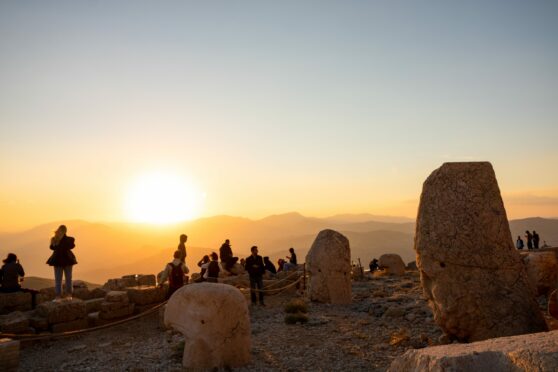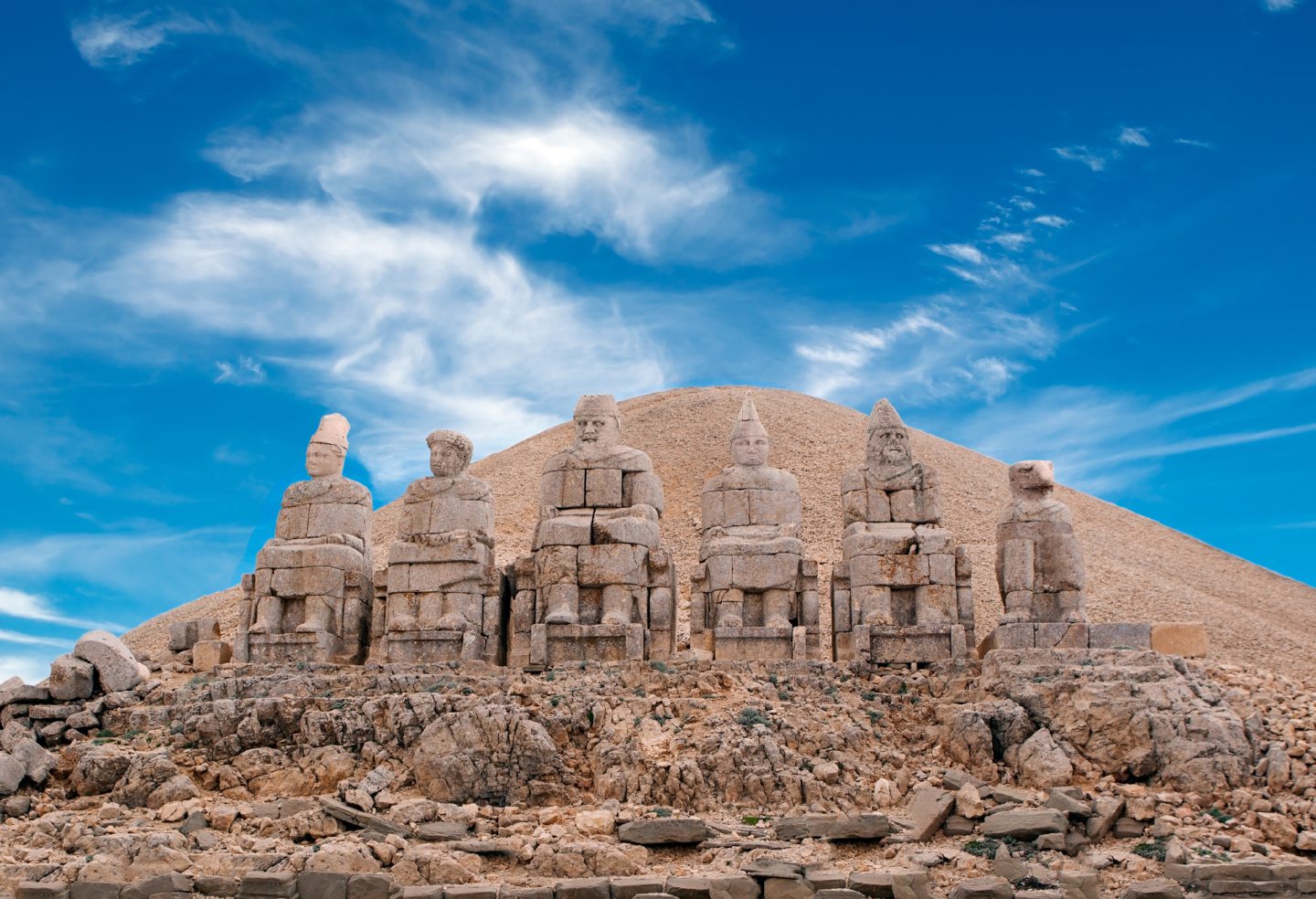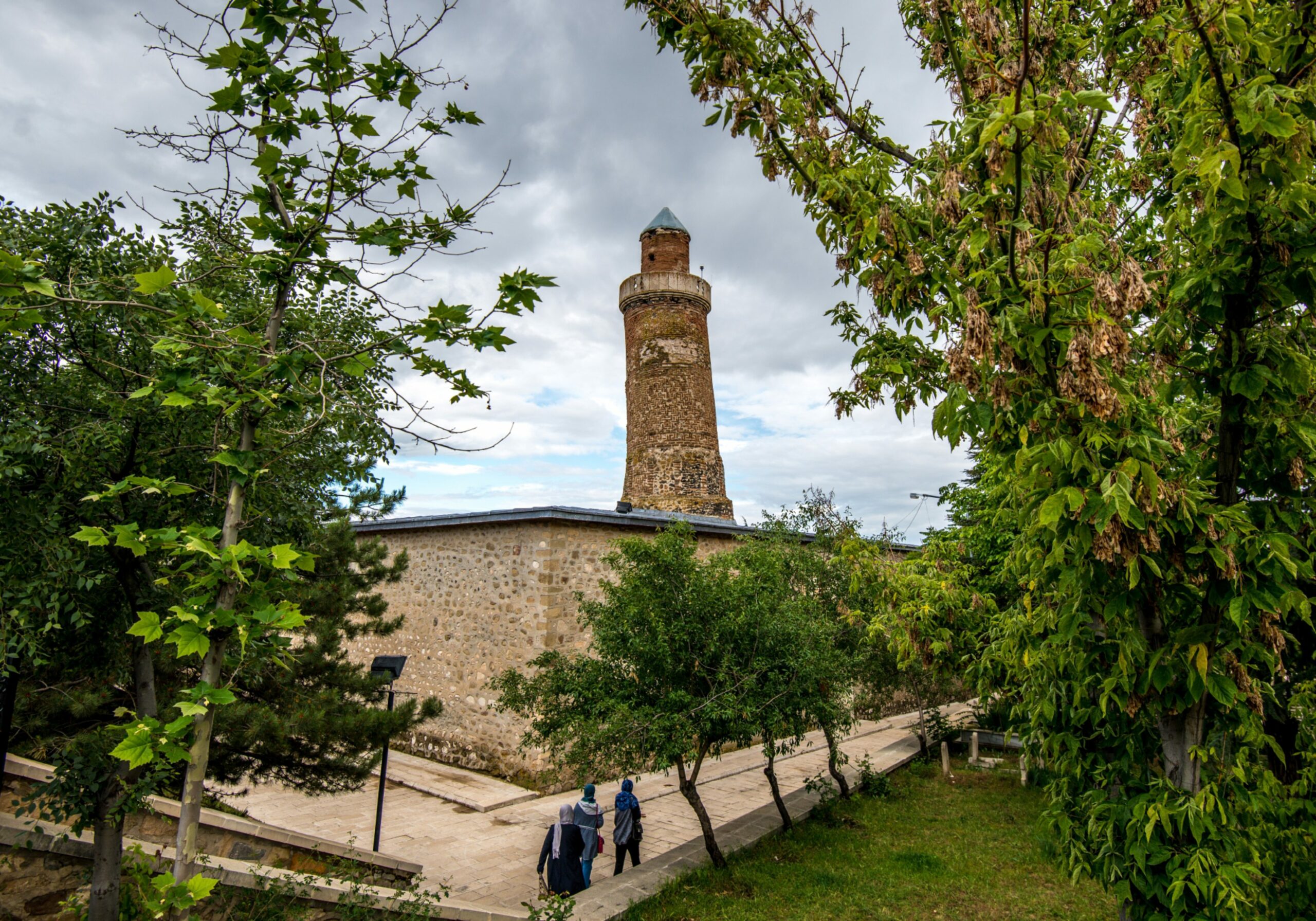
Deep in the Taurus mountain range of Eastern Turkey, one peak towers over its neighbours. This is Mount Nemrut: holy tomb of one of history’s most notable kings, rocky wonder climbing 7,000ft above the ancient lands of Anatolia, and, more lately, tourist trap.
Hike up the surprisingly tame, paved path to the summit and you’ll find the terraces that surround the artificial, 55-metre-high stone chip summit.
One terrace faces to the East: the land of Persia and Darius and mysticism. The other points West, towards the Greeks and Alexander the Great and classicism. Both are flanked by stunning stone heads, carved from limestone and dragged to the top before Jesus Christ was turning water into Jacob’s Creek.
The peak, created more than 2,000 years ago, contains within it the tomb of Antiochus I, the king who united the bloodlines of Alexander and Darius and brought together the divided ancient world.
And this is also modern Turkey. Fly there with Turkish Airlines and Morgan Freeman, for some reason, will explain on the inflight TV screens how this is the land where continents met aeons ago (forming those Taurus mountains) and where, now, the world converges.
Usually that’s in Istanbul or thereabouts but away from the capital, to the east, is a part of the country tourists don’t usually see. Turkey’s President Erdogan wants to change that; and with good reason.
It is a region where history is carved onto the mountains; not just of a storied country, but of humanity itself. This part of the world makes up some of the fertile crescent, where humans first organised themselves into something resembling a society, and it’s here where you can explore the origins of civilisation.
Our first stop is Elazig, in the upper Euphrates valley. In Eastern Turkey, the moustaches become thicker and more imperious then even in Istanbul, as do the powerful coffees that are dense enough in which to stand your teaspoon upright, and strong enough to power a walk around Harput Castle. This is a prospective Unesco site, originally built in 800BC. It is also known as Milk Castle after a shortage of water led labourers to add dairy to the bricks of the fort’s walls.
Over its history, the stronghold, guarding over the caravan route bringing silks and spices to Cappadocia, fell under control of Persians, Romans, Arabs, Byzantines and Ottomans; a who’s who of empires have dropped in and left their flourishes here.
Its highest point is a schlep but the consolation is both the view of the spectacular Euphrates valley, and the appetite you’ll inevitably gain.
Local craftsmen make flat, oblong ceramic dishes, in which trout, plucked from the Euphrates, are baked and served with buttery rice and coriander-laced salads. Locals are also dedicated to a fairly basic lentil soup.
Turkey is the world’s leading producer of apricots and the east’s hot, dry climate is where the fruit thrives. Our drive through Anatolia was through roads surrounded by hills containing endless orchards. It was also periodically terrifying; the rules of the road seem optional and our motorway exit to Malatya was taken with the temerity of Jason Bourne trying to lose a CIA tail.
Completing our journey into the east, in the heavens at Mount Nemrut, there is a bird’s-eye view of Anatolia. We arrive in the evening, only moments prior to the sunset; we pause only to pay our respect to the 6ft-tall stone carving of Antiochus I.
These carvings, our guide tells us, were knocked from their bodies a few decades ago by an American archeologist, trying to access the lofty tomb with the help of dynamite. He failed and further such excavations were stopped.
The undisturbed king still rests within Nemrut for now.
At the conclusion of our journey into the mountains we rested on one of Nemrut’s terraces, watching the sun’s hue dim to a vibrant apricot colour, over the mountains of Anatolia.
P.S.
Arslantepe is the Unesco World Heritage centrepiece of Malatya. Over centuries, it has been conquered and reconquered, washed over by the tides of history. The clay walls fell and were rebuilt so many times it created the mound of archeological treasures being excavated to this day.
Factfile:
Visit goturkiye.com and the Türkiye Tourism Promotion and Development Agency www.tga.gov.tr for more information.

Enjoy the convenience of having The Sunday Post delivered as a digital ePaper straight to your smartphone, tablet or computer.
Subscribe for only £5.49 a month and enjoy all the benefits of the printed paper as a digital replica.
Subscribe © Shutterstock / muratart
© Shutterstock / muratart © CEM AYDEN
© CEM AYDEN